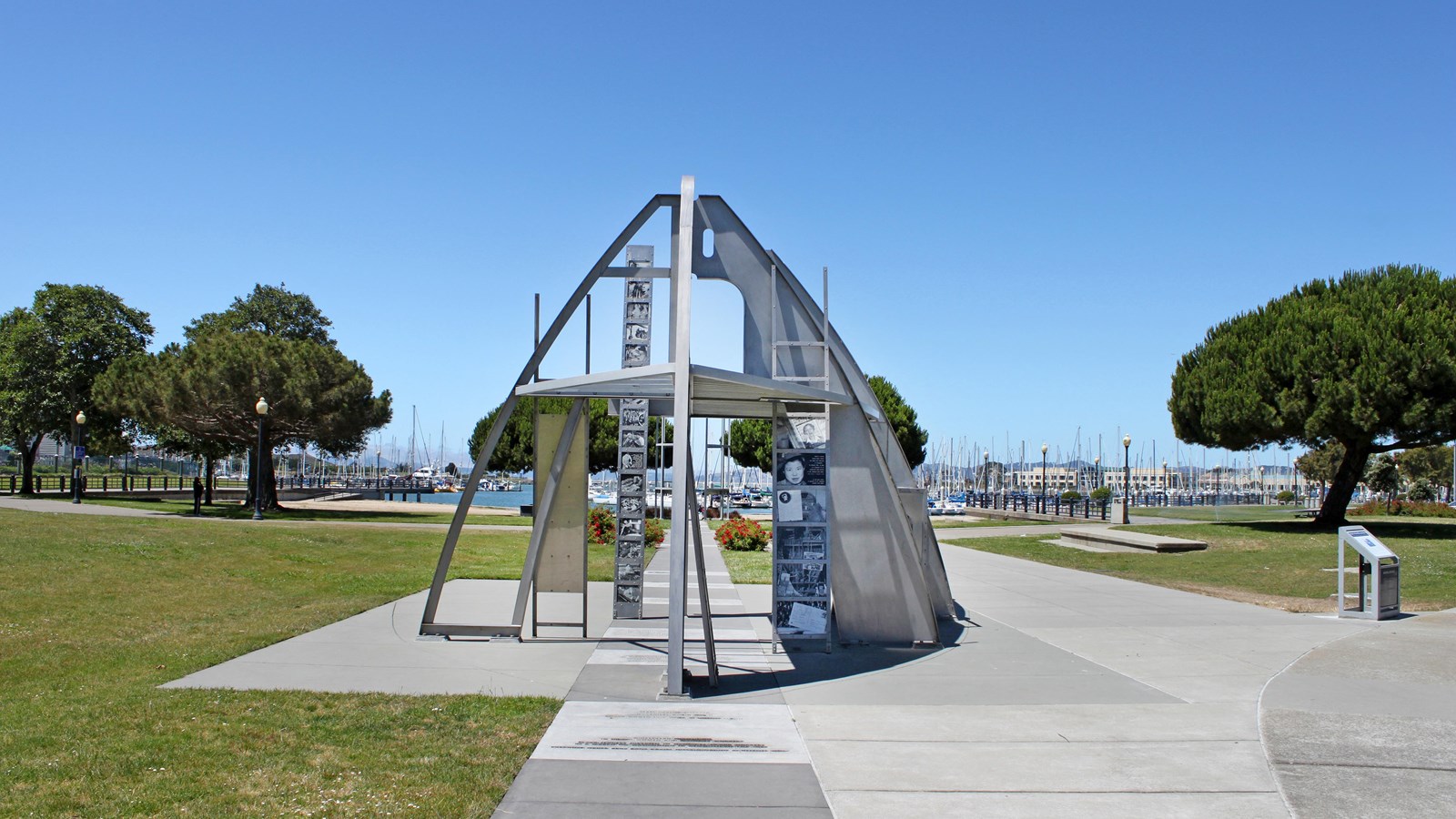Last updated: June 30, 2024
Place
Rosie the Riveter Memorial

NPS photo/Luther Bailey
Restroom
Honoring the Women of WWII: The Rosie the Riveter Memorial
The Rosie the Riveter Memorial originated as a public art project for the City of Richmond in the 1990s. As the project progressed, the National Park Service was invited to collaborate, a partnership that ultimately led to the establishment of the Rosie the Riveter/WWII Home Front National Historical Park in Richmond, California.
The memorial was designed by visual artist Susan Schwartzenberg and landscape architect/environmental sculptor Cheryl Barton. Officially titled "Rosie the Riveter Memorial: Honoring American Women's Labor During WWII," it holds the distinction of being the first national memorial dedicated to commemorating and illustrating the vital contributions of American women during the Second World War. Chairwoman Donna Powers spearheaded the campaign to establish the Memorial, and the sculpture was commissioned by the City of Richmond and the Richmond Redevelopment Agency.
The main feature of the memorial is a walkway that spans the length of a ship's keel, gently sloping toward the San Francisco Bay and aligning with the Golden Gate Bridge. Along this path, a timeline of the home front and quotes from female workers are etched into white granite. Sculptural stainless steel elements, inspired by ship blueprints, depict the unfinished forms of a hull, stack, and stern under construction. The location of the ship's fore and aft hatches is marked by two gardens—one filled with rockrose and the other with dune grass.
Porcelain enamel panels on the hull and stack display memorabilia and letters collected from former shipyard workers, as well as photographs of women engaged in various wartime jobs across the nation. These panels, along with the quotes and timeline, highlight the diverse experiences of women during the war years, including the challenges of gender discrimination, hazardous working conditions, food rationing, and the shortage of housing and childcare.
The inspiration for the memorial came from two women in Donna Powers' family: her mother-in-law Ruth Powers, a teacher at the Richmond shipyards daycare centers, and her great aunt Clarissa Hicks, a riveter at Douglas Aircraft in Tulsa, Oklahoma. Their compelling stories motivated Powers to reach out to other women in Richmond about their wartime experiences. Under the leadership of historian and cultural planner Donna Graves, the project evolved into a significant tribute to the women of the WWII home front.
Features of the Rosie the Riveter Memorial
- Walkway Design: A central walkway, the length of a ship's keel, that slopes toward the San Francisco Bay and aligns with the Golden Gate Bridge.
- Timeline and Quotes: The pathway is inscribed with a timeline about the WWII home front and quotes from women workers sandblasted into white granite.
- Sculptural Elements: Stainless steel structures inspired by ship blueprints, representing the unfinished forms of a hull, stack, and stern under construction.
- Gardens: Two gardens featuring rockrose and dune grass, symbolizing the ship's fore and aft hatches.
- Porcelain Enamel Panels: Panels on the hull and stack displaying memorabilia, letters, and photographs of women at work, gathered from former shipyard workers.
- Historical Context: Illustrations of the complex challenges faced by women during the war, including gender discrimination, hazardous working conditions, food rationing, and shortages of housing and childcare.
- Inspiration and Leadership: The memorial was inspired by the stories of women in Donna Powers' family and expanded under the leadership of historian and cultural planner Donna Graves.
- Commissioning and Design: The project was commissioned by the City of Richmond and the Richmond Redevelopment Agency and designed by visual artist Susan Schwartzenberg and landscape architect/environmental sculptor Cheryl Barton.
How to Listen to the Audio Program
The play button is the small sideways triangle on the left side of the audio player, below. You can also download the file to your computer or phone with the downward arrow button on the top right of the audio player.
-
Rosie the Riveter Memorial
This program is part of an introduction to the history of the park and the WWII Home Front. You can listen to it at home, while driving, before your visit to the park visitor center or as part of the official NPS App driving tour. These files are also available as a free download on our website and can be a great educational tool for your classroom.
- Credit / Author:
- NPS/Luther Bailey and Lauren Goode
- Date created:
- 07/18/2023
